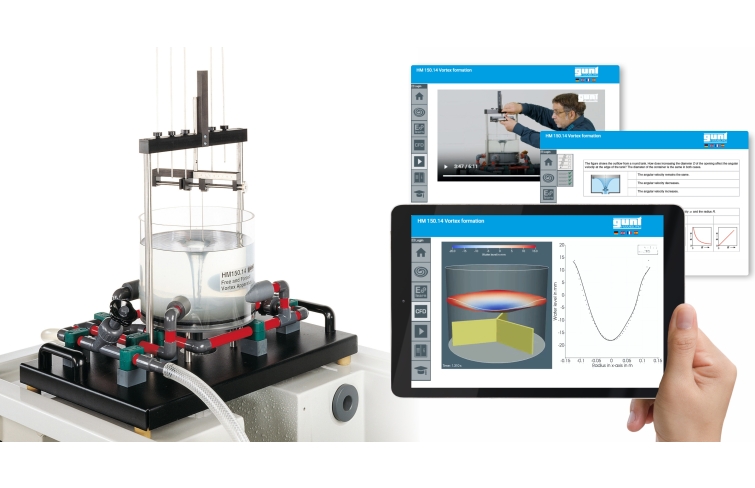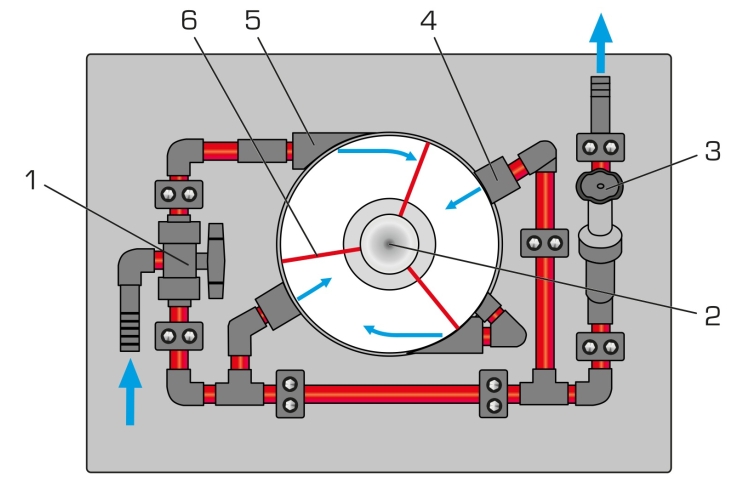In fluid dynamics, a vortex is a circular flow of a fluid caused by sufficiently large velocity gradients. In practice, this can be observed, e.g. when water flows out of a basin into a pipe.
The HM 150.14 experimental unit allows you to produce and study free and forced vortices.
The experimental unit has a transparent tank with nozzles, various inserts on the water drain, an impeller and a point gauge for detecting the vortex profiles.
To form the free vortex, water is introduced radially into the tank and flows through a ring to slow down. The vortex is created by the flow out of the tank. There are four easily replaceable inserts of various diameters available for the drain.
To form a forced vortex, the water is introduced tangentially. The vortex is generated via an impeller driven by a water jet.
The point gauges are used to measure the surface profiles of the vortices. The rotational speed is determined using a measuring ring.
The experimental unit is positioned easily and securely on the work surface of the HM 150 base module. The water is supplied and the flow measured by HM 150. Alternatively, the experimental unit can be operated by the laboratory supply.
In order to perform a virtual analysis of flow behaviour, CFD simulations are often used in practice. Such simulations allow, for example, flow visualisations in areas that cannot be visualised experimentally. In the GUNT Science Media Center, surface profile visualisations based on CFD calculations are available online. There are also multimedia teaching materials including E-Learning courses on basic knowledge and calculations. Videos show a complete experiment with preparation, execution and evaluation. Worksheets with solutions supplement the teaching material.

















